Weight Reduction - Putting the C5 Corvette on a diet!
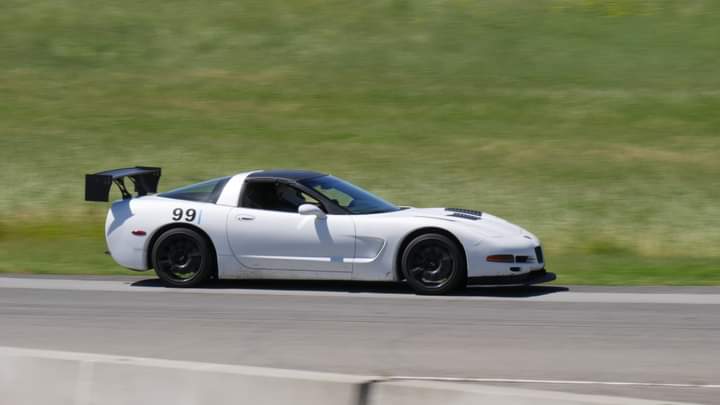
Lately, I've been wanting more from my corvette. After a weekend with a mustang group where they'd all corner so slow but gap me on the straights, I was frustrated. Then I went and competed in an SCCA time trial weekend where I yet again was frustrated by my inability to keep up with some of the more powerful cars in the straight. It just annoys me when inferior drivers can put down faster lap times than me just because they've got more powerful engines on more modern cars!
The solution for this will be two-fold, and all based around staying with the confines of the SCCA Max 2 class.
First, there's the obvious choice of adding power. I'll be doing that and blogging about it over here.
The second part, which I'm writing about here, will be weight reduction. No sense dragging around a bunch of extra weight I don't need to, it's just slowing me down! Besides, this car has long since departed form being a street car... so I might as well go bananas!
Initial Weigh In & Weight Reduction Game Plan
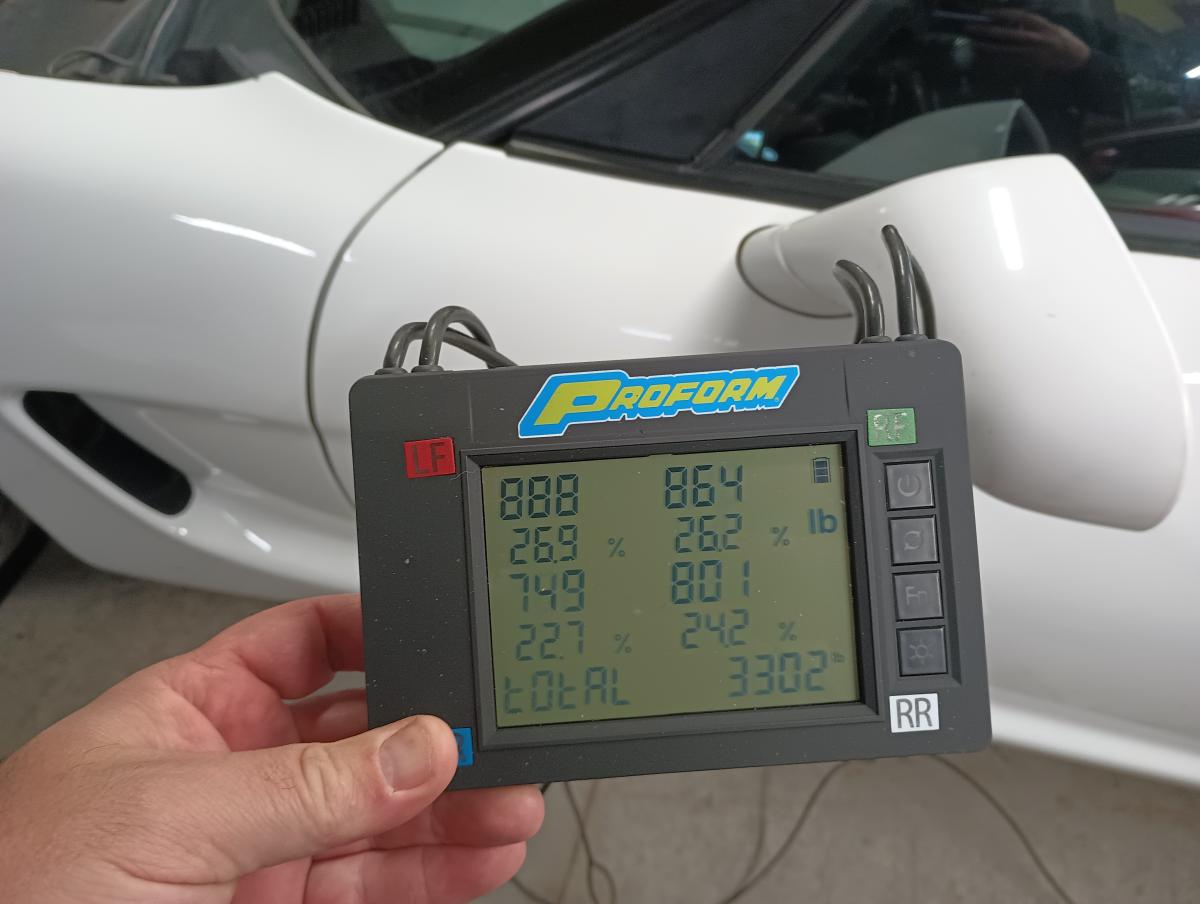
So I obviously can't go back in time to tally the various modifications I've made to the car, but as it sits, it currently weighs in at 3302lbs. That's with a lead acid battery, nearly all of the interior carpet, a working tape deck, air bags, aftermarket seats, a roll bar setup, C6 seat belts and harnesses to boot... it's more than nescessary and likely adding a bunch of weight. The current weight distribution is 53/47, which isn't half bad, but I think I can improve a bit as well. I'll also work on corner balancing the car as I can.
I'm going to be breaking the weight savings up into two "stages", just as a simple way to explain the cost to gain ratio of some of these things. The stage 1 modifications will generally be cheap, or standards bit of adjacent essential standard upgrades like exhaust, aero etc etc. The stage 2 modifications though are where costs and effort start to go up notably, and the returns may not be there quite as much as the returns on Stage 1 upgrades.
The rough gameplan as it stands:
- "Stage 1" Weight Reduction
- "Stage 2" (in progress)
- Removing additional bits that were not straight forward to reach.
- Removal of additional interior bits to add roll cage
- Rear window replaced with Optic Armor Lexan
Swapping the Battery for Lithium
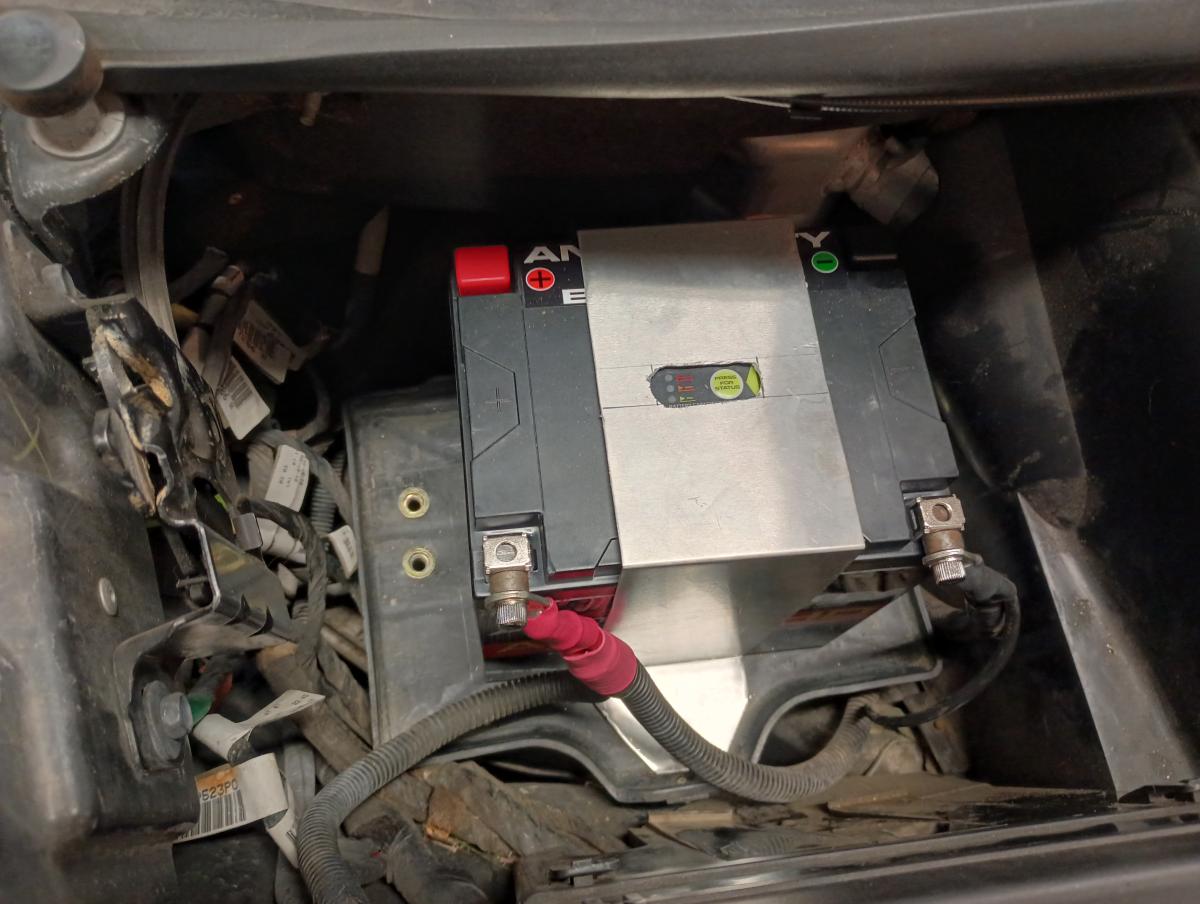
So I reached out to the folks over at https://antigravitybatteries.com/ about swapping out my old boat anchor of a lead acid battery for one of their new awesome lithium batteries. Per their recommendations, I went with an Antigravity ATX30-HD Lithium Battery, which they descirbe as a heavy duty Motorcycle / Powersports battery. The reccomendation was largely based on the minimal needs of the car, which is simply reliable starting throughout the corse of a weekend at a track event.
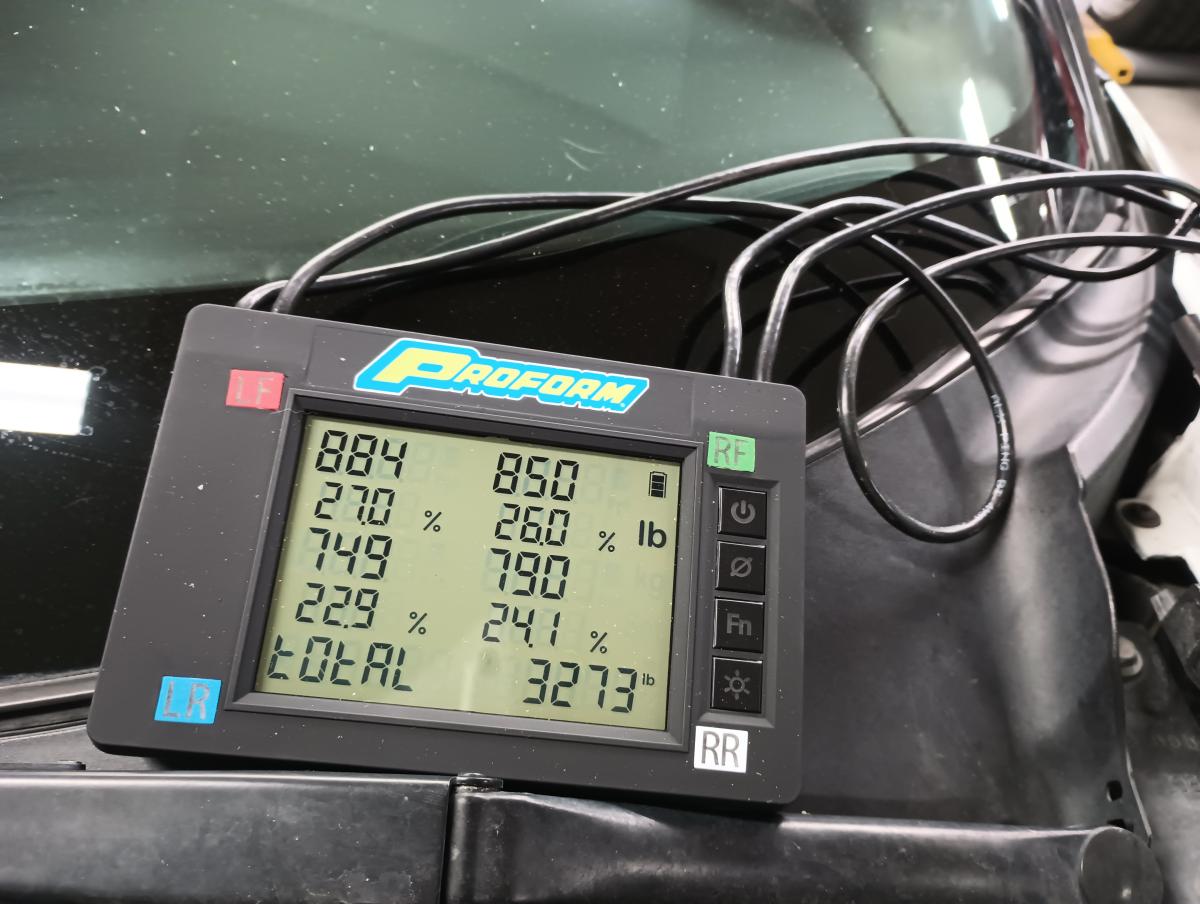
Weighing the car after swapping in the Lithium battery demonstrated a 29lb weight reduction! Pretty significant loss of weight, and on the front of the car where it so desperately needs weight reduction. Some folks like to relocate their battery to the back left portion of the car, which as you can see would help corner balance the car, however that still doesn't reduce the total weight, and infact increases it as it's a rather long run of heavy duty wiring.
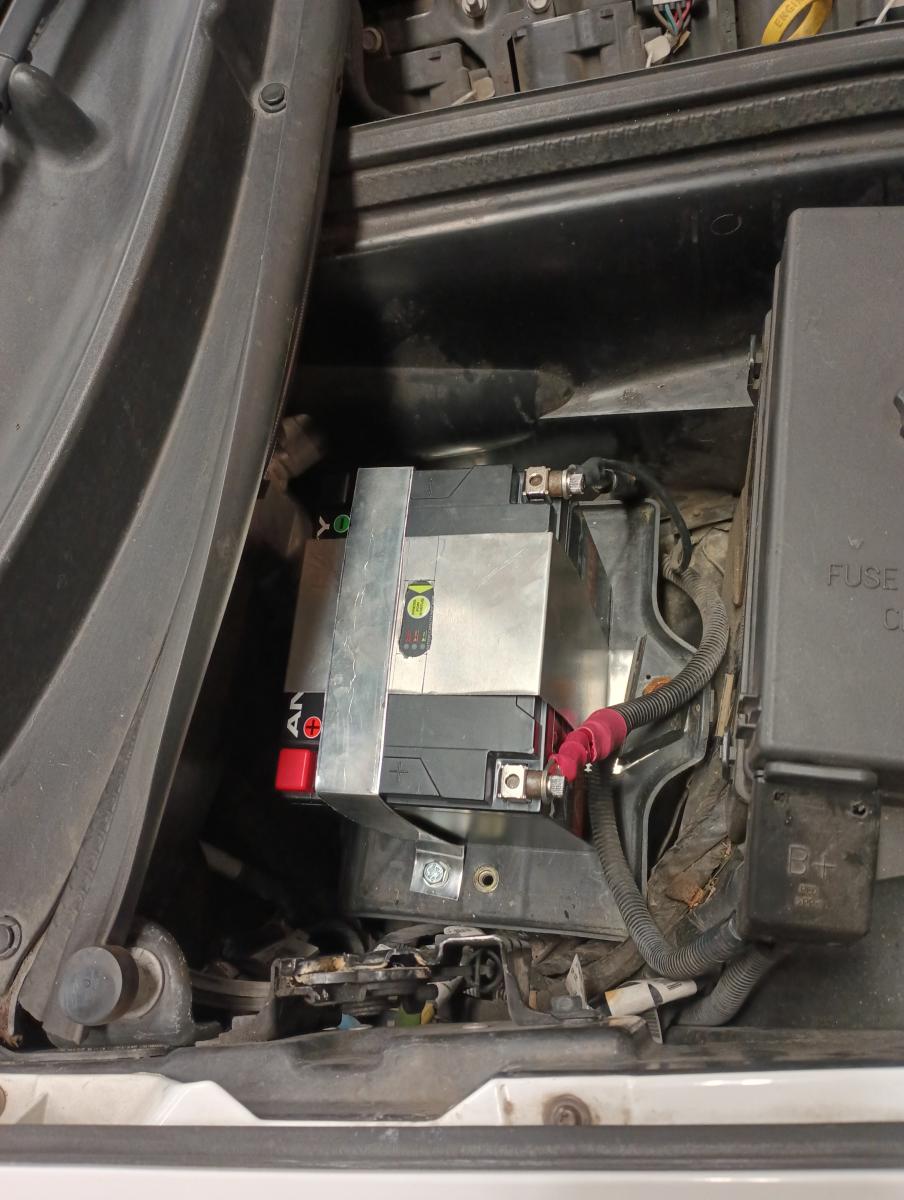
Install was simple enough. I removed the OEM battery, took some simple measurements of the new battery, centered the new battery on the old battery tray and bent up some aluminum bits to hold the battery in place. Rivnuts ensure reasonable install and removal of the aluminum straps, and honestly it wasn't that big of a deal. The biggest headache I would say is cutting the OEM sidemount terminals, finding new terminals in the large gauge that you need but with the smaller diameter opening for the small powersport sized bolts you would need , and then navigating crimping the new terminals on in the rather limited space of the OEM battery location. Was it really all that difficult? Not terribly. Would I just get a properly sized battery with sidemounts for the next time? Yes, I probably would recommend that for the average person who isn't scrimping for every single pound of weight retention that they can.
I'll report back on how this works over the first few track days where I take it out, but overall I'm pretty happy with it and it yields some notable weight reduction up on the front of the car!
Weight Reduction on the rear of the car
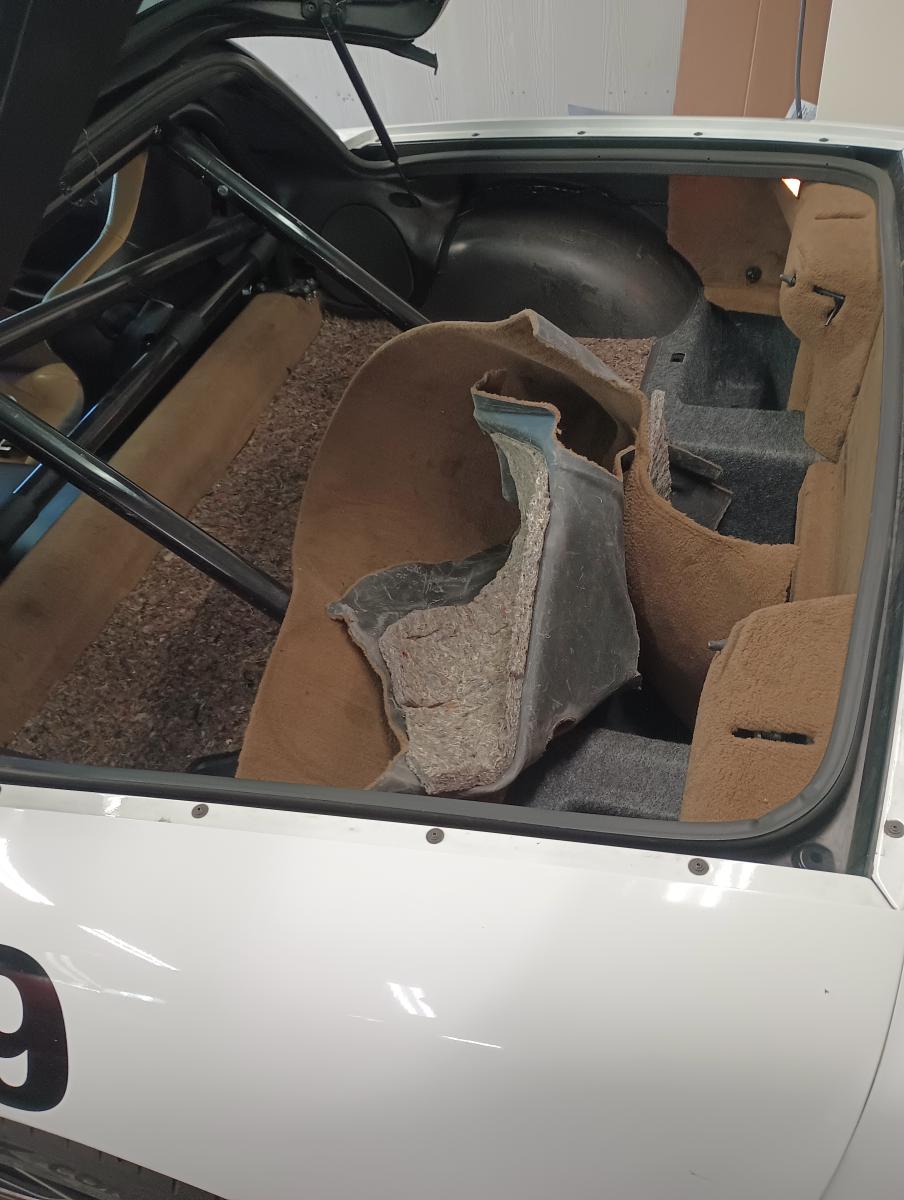
So the simplest place to start on the C5 was the rear of the car. Per SCCA Max class rules, if you've got a rollbar you can remove everything from the seat back. So away I went pulling up all the carpet, padding, and anything else I could find. Speakers went out, trim went out, assorted brackets were removed (5 disc changer bracket, targa top holder, etc etc). I even went so far as to cut anything off that couldn't be removed!
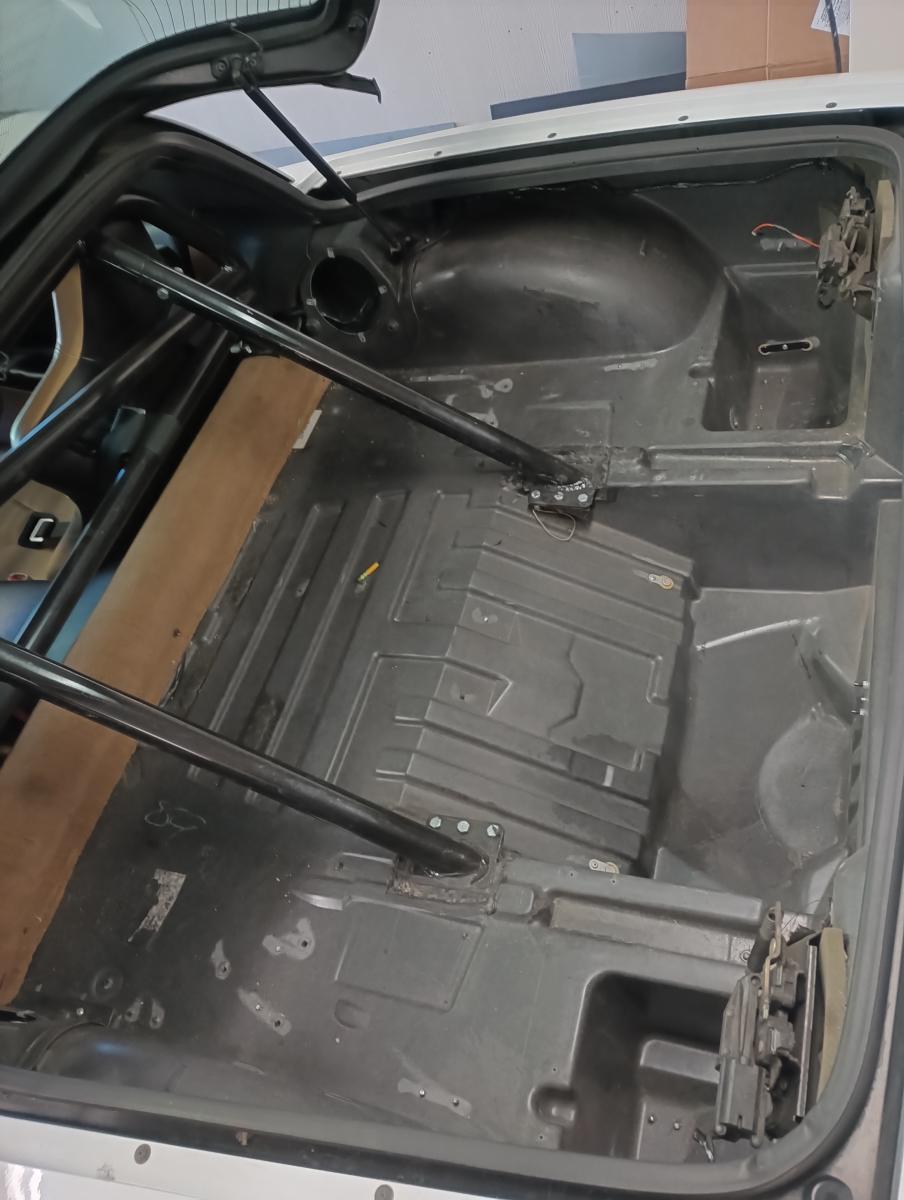
As you can see above, I was able to strip the rear pretty easily! I left the carpet over the gas tank part behind the seat, but that will eventually go along with any carpet under the seats. Should yield some notable weight loss. Unfortunately... this isn't exactly where the car needs the most weight loss, but eh whatever weight I can avoid having to drag around the track is a gain!
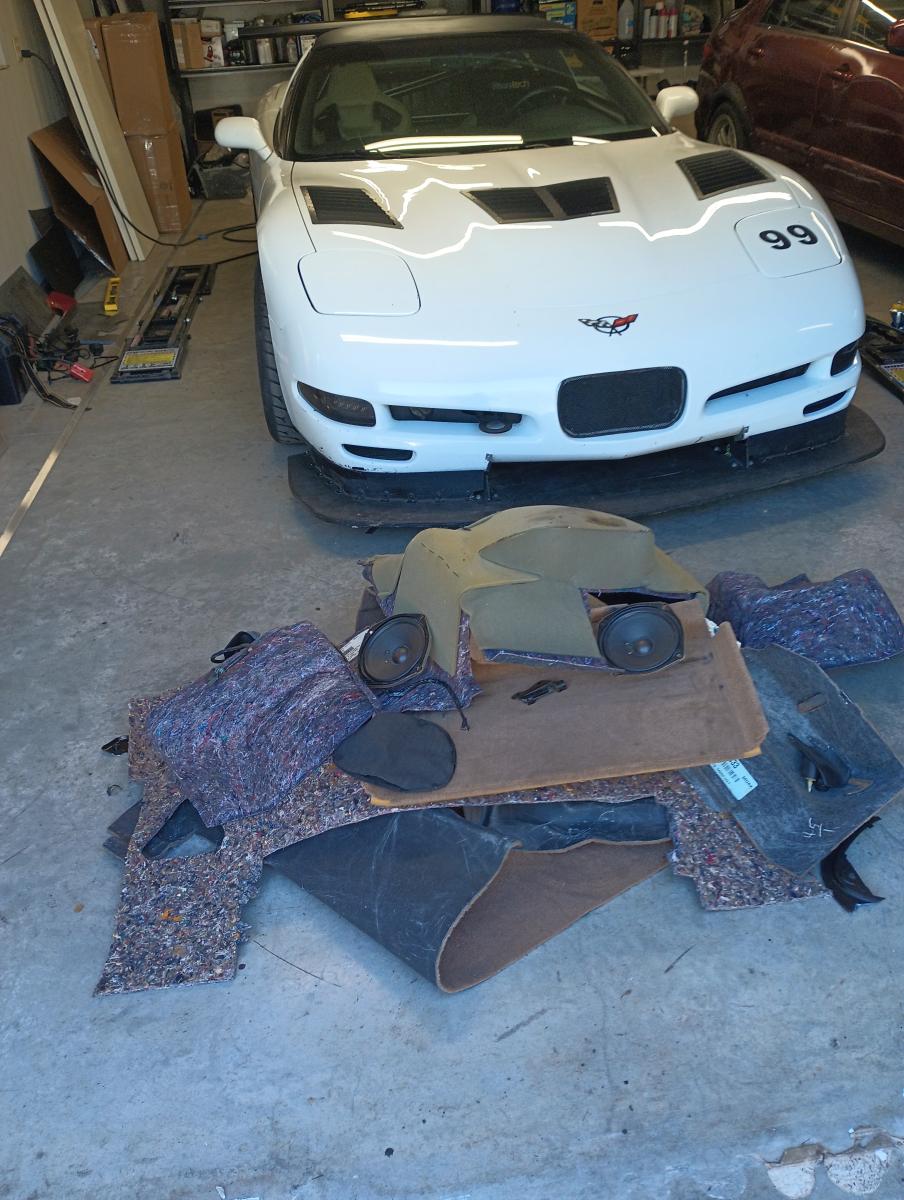
As you can see, the pile of stuff removed from the back is fairly significant!
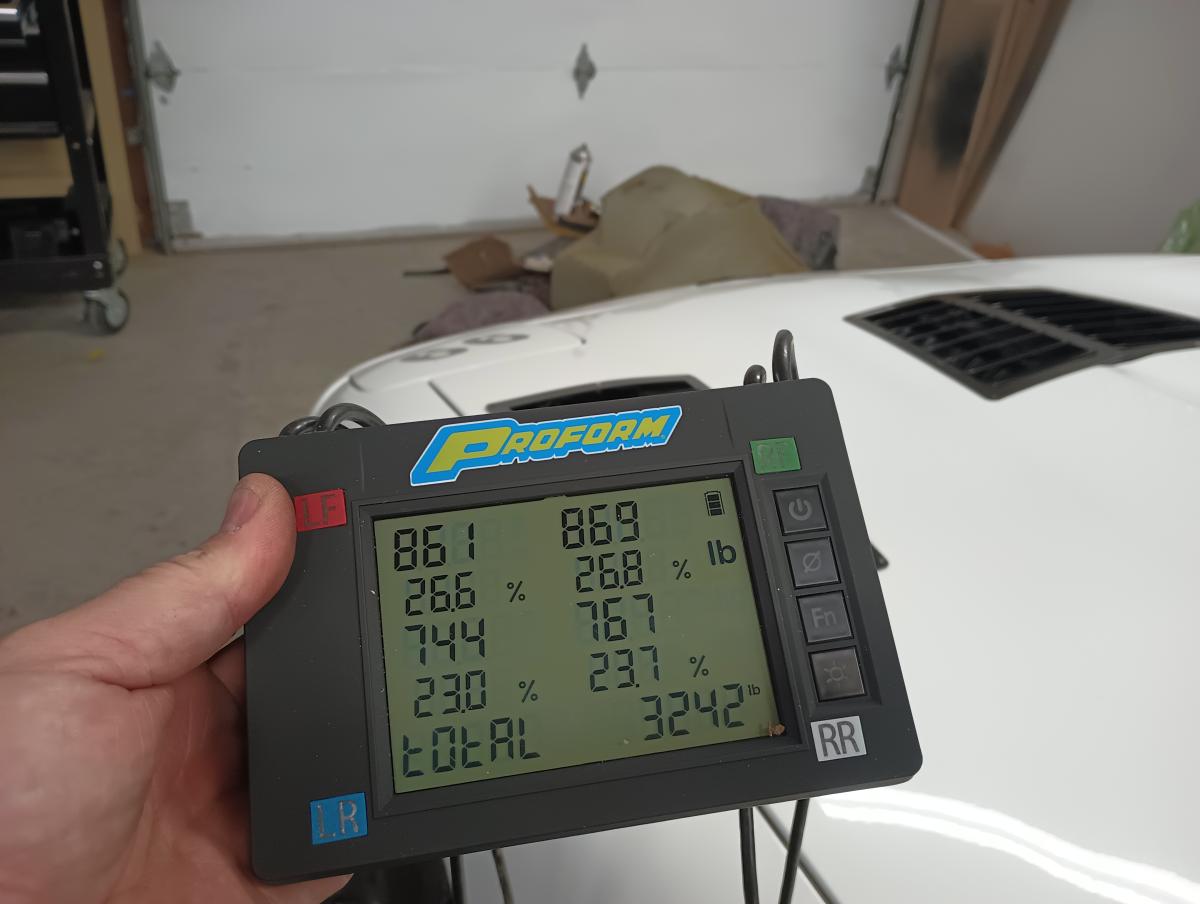
...and here is the weight savings from stripping the rear of the car down. The car now weighs 21lbs less. I honestly was hoping for a bit more of a weight savings, but I'll take that as a start to the weight savings on the car! Incidentally... the corner weights moved around a bit, probably mostly relating to not settling the suspension before taking the weight values. For now, I'd mostly focus on the total, later I'll corner balance the car properly.
Optimize Cabin / Dash
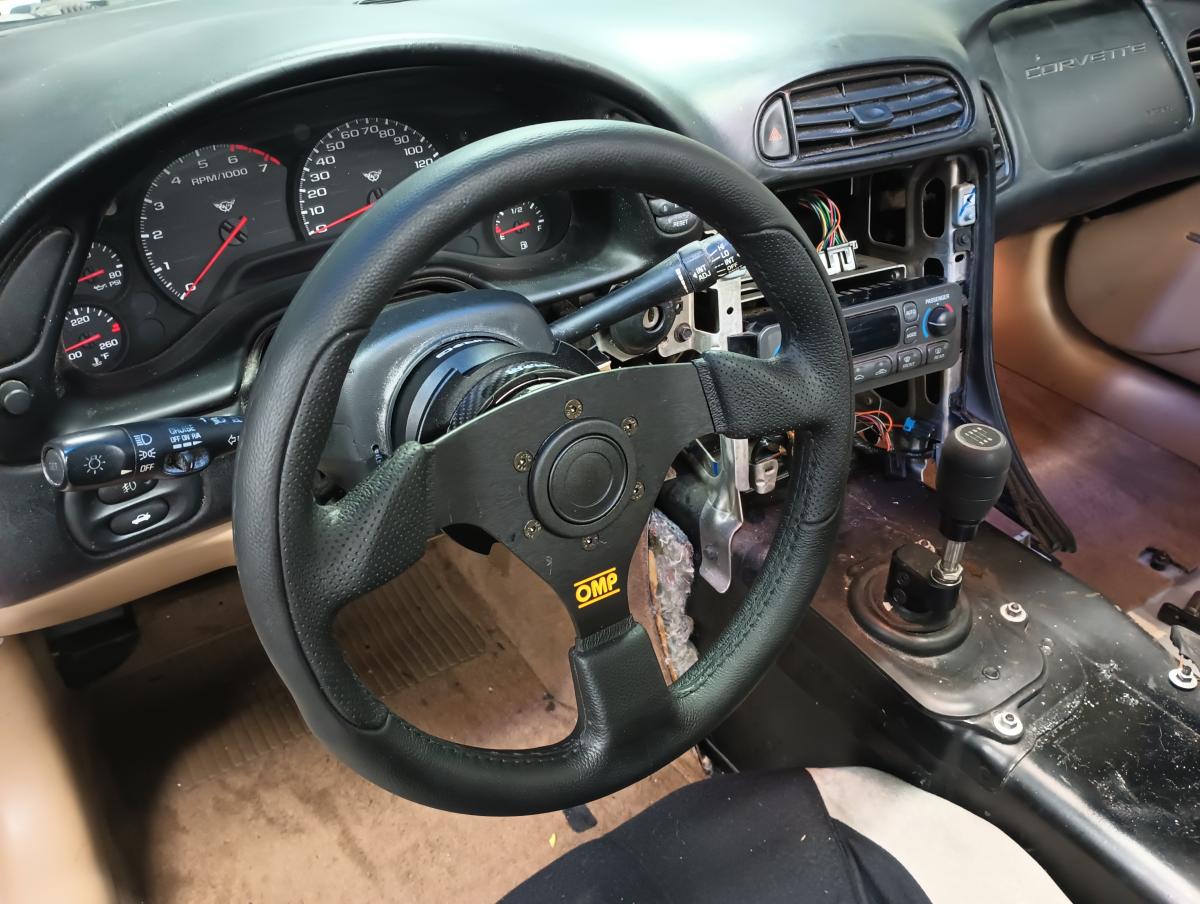
Click here for the full in depth article here!
So the weight loss journey on the front of the car was so involved with so much information... I figured it is worthy of it's own article, so go check it out if you want to get way into the weeds of what was involved and what individual parts weigh! The short version for here I'll post though is: I was able to ditch 100lbs of weight off the front of the car*! I also managed to upgrade the steering wheel which was long overdue for both driver control improvements along with safety as I can now egress the car notably easier with the wheel removed.
Some Larger Notable Items removed and approximate weight:
- Driver airbag - 3.5lbs
- Passenger Airbag - 8.5lbs
- Glove Box - 3.75lbs
- Front Speakers - 8lbs
- OEM Tape Deck Stereo - 4.5lbs (RIP tape deck, you worked until the very end!)
Now of course there were a lot of other little savings that added up, but those are all the big ticket items people often guestimate at the weight of. Feel free to pop over to the indepth article for actual scale weigh ins on those items.
It's also likely worth mentioning there are some additional weight savings to be had up front. What I did was just the basics, and you may find yourself in a less restrictive class or just not care about rules in general. There's additional carpet up front to be removed, you can remove HVAC, and the entire dash itself weighed in at 19lbs so ditching that would yield some notable saving as well. In my case though... I ditched a bunch but the car largely remains a street legal car with a lot of it's factory functionality in place.

It's worth noting the asterisk I put there in the my weighing in of the car. That is weight loss with the passenger amazon seat removed as well (someday I'll also upgrade this to a bucket seat). Turns out, that seat and mounting bracket weigh 18lbs. So the actual weight savings was closer to 80lbs up front, at least for me in SCCA Max 2as I don't believe I can remove the passenger seat. Your class may allow you to remove the seat, or if you're just tracking the car and aren't taking passengers out it's 4 minutes and 4 bolts to remove the seat. Why wouldn't you ditch it?
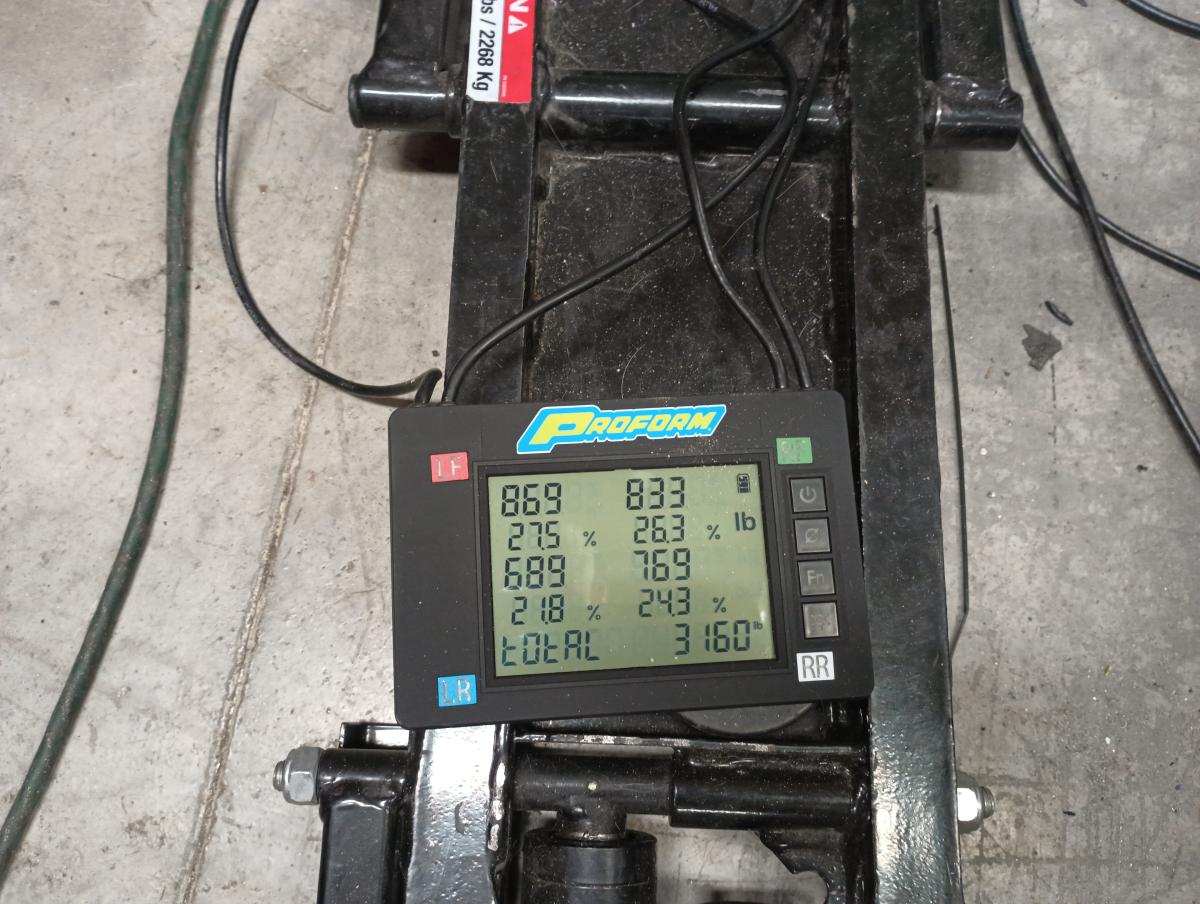
Final weight of my C5 with the glass on the top and the passenger seat installed... 3160. Down 142lbs from my initial weigh in of 3302lbs. Not too shabby!
Optimize & Skeletonize splitter
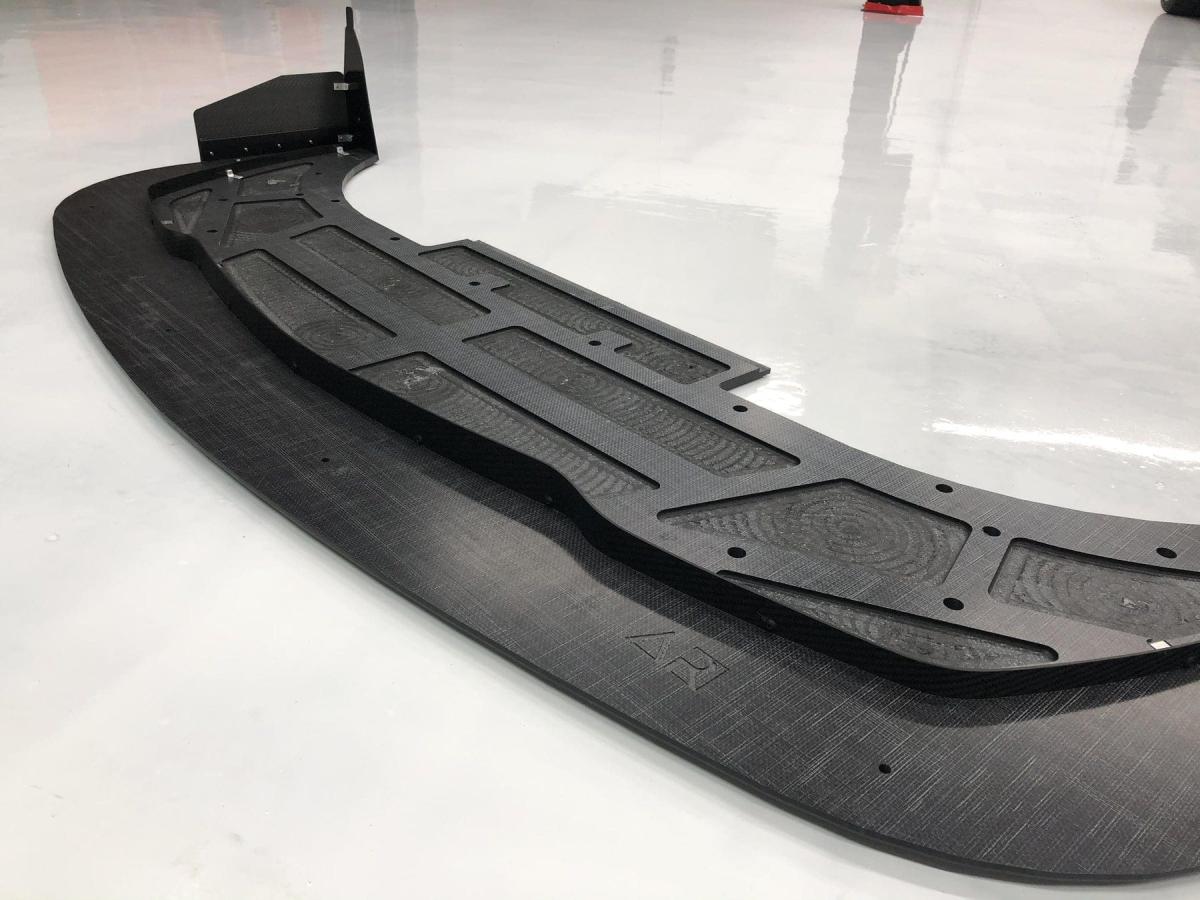
So while cruising the internet one day, I noticed a picture of a splitter off of a car where the part of the splitter behind the airdam was skeletonized. This was a "well duh!" kind of moment for me, because that area is just extra weight. This got me thinking, could I skeletonize my splitter to reduce weight? It would be weight off the front of the car for sure as well which is the main area I would benefit from removing weight. Plus, the splitter I designed was done in a hurry outdoors with less than ideal tools. With a shop space all my own I could probably do a way better job!
So I began the process of removing and optimizing my splitter. All of my notes are in a child article on the topic here. The article is pretty in depth and I didn't want this article to blow up with all the nuanced details. This will just be about how much weight can be saved by skeletonizing a splitter!
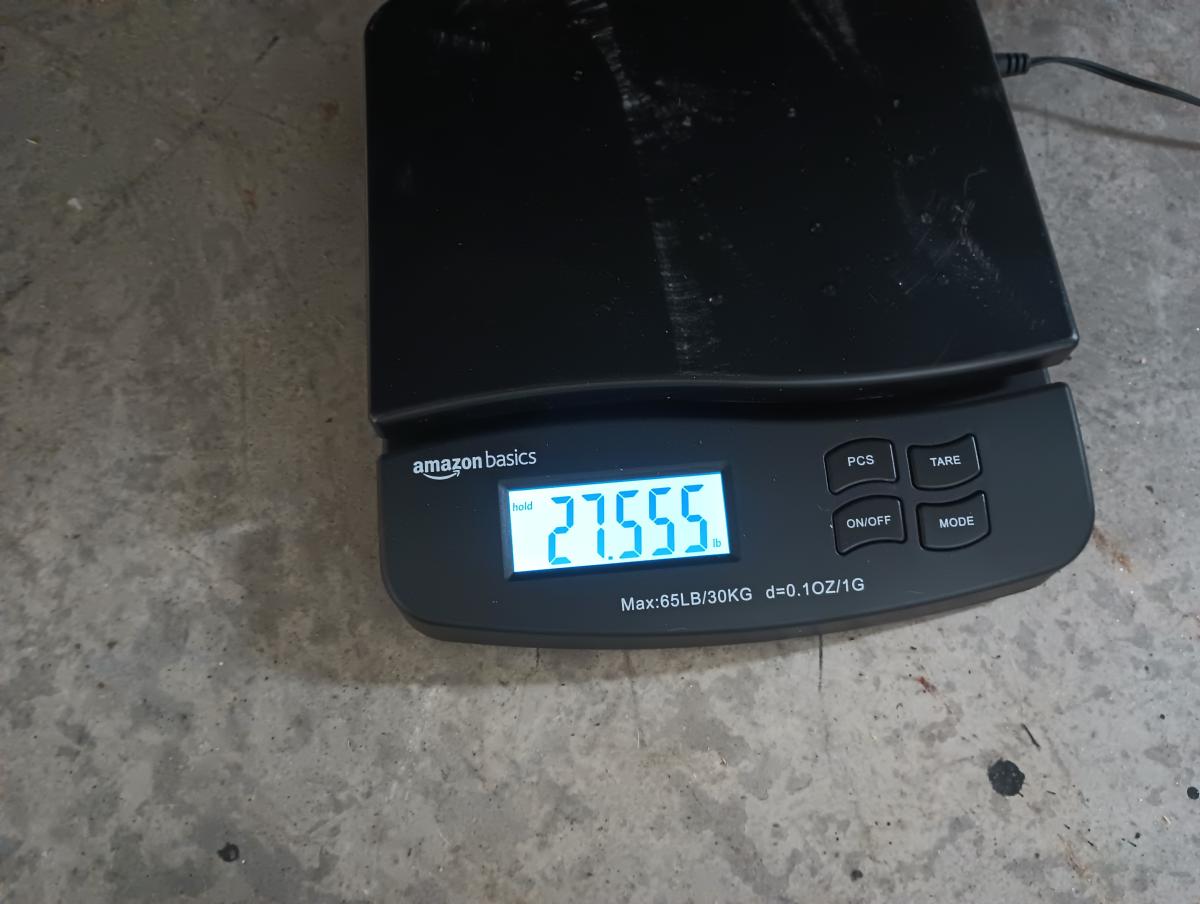
The splitter weight in right at 27.5lbs, so not svelt by any means! We'll see just what kind of weight savings I can get out of this puppy! Definitely lends some credibility to the claim that alumalite is a smart material to work with!
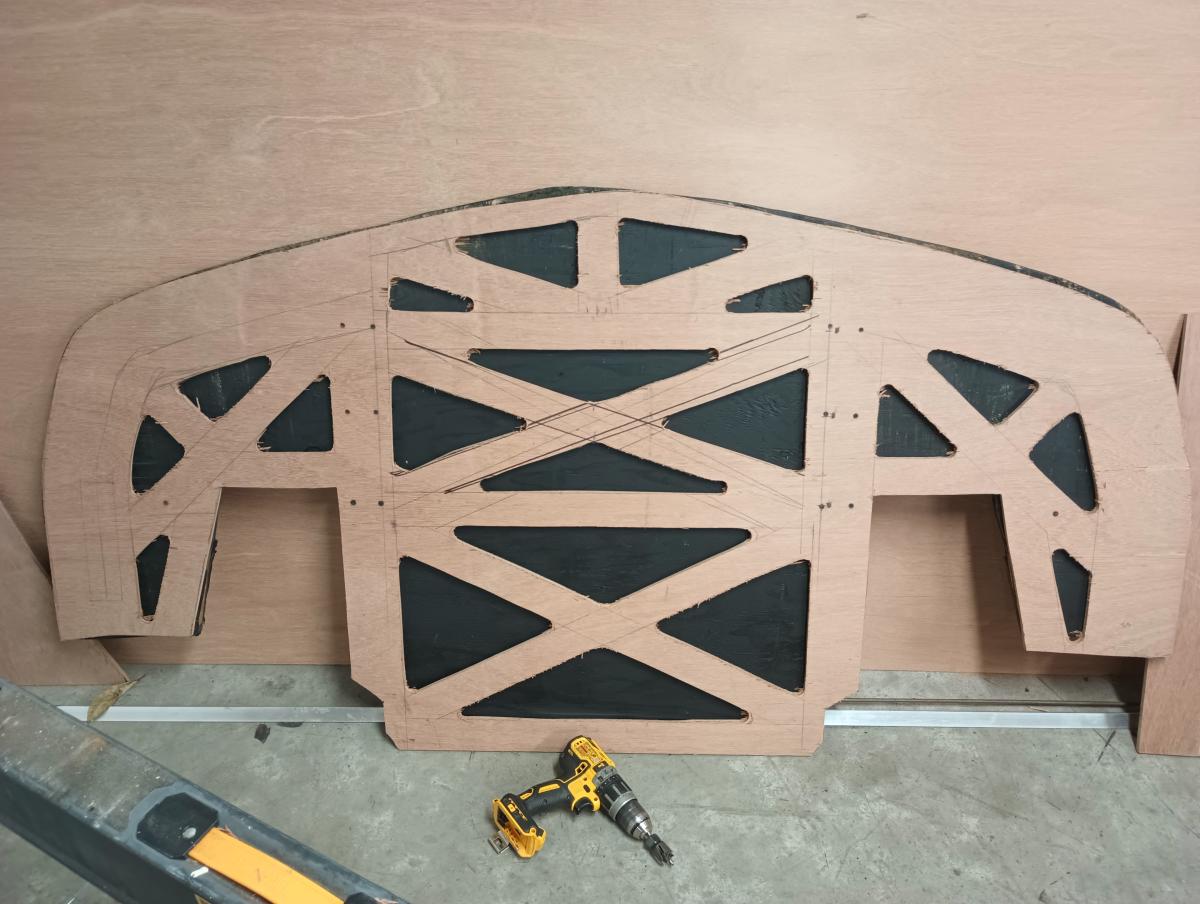
I estimated the following weight savings:
Original 3/4" plywood weighed 27.5lbs.
5/8" is a reduction of approximately 17%, or 4.59lbs of savings (22lbs)
The 3/8 sheet consists of approximately of 60% of the total weight (13.2lbs) and I removed about 40% of it (5.28lbs).
This should reduce the splitter weight to a hopeful 17.63lbs.Or, a 36% weight savings! Factor in some random bits not included (splitter ramps, paint, etc) I'd be happy with a 15lb weight savings!
What were the actual weight savings in the end with the skeletonized splitter?
No weight savings. Infact, I gained .25lbs. I believe this is because I went with a different wood than I had originally used. While the new wood is much more robust and water resistant... it weighs more. So in the end, it's a wash weight wise, but I've got a strong wood setup and adequeate thickness where it matters!
Removing the AIS (Air Injection System)
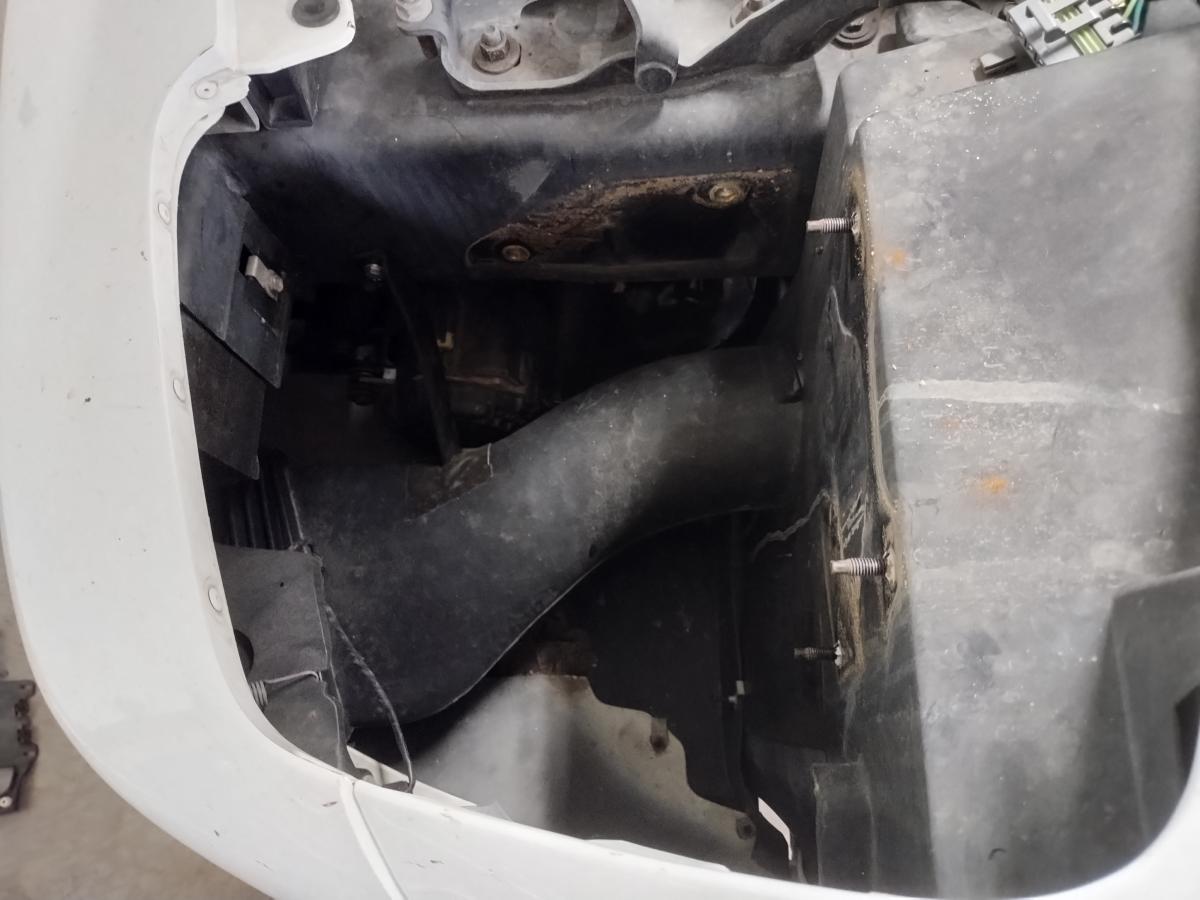
So one item on the C5 Corvette up front that can easily go is the AIS (Air Injection System). You need it for street driving as it's an emissions system, but if it's a track car, you don't need it! Some folks will say you don't need it if your state doesn't check emissions.. which isn't entirely true, something like this is more accurate: "you can get away with not having it".
I happened to be in the area of the AIS while changing out my intake for an LS6 intake and changing out the oil pressure sensor that notoriously goes out bad these Corvettes. I'll be elaborating on the specifics of removing the AIS later and some parts I designed up with Send Cut Send, but for now suffice it to say it's not that hard, just need a few block off plates for your exhaust (or an exhaust that doesn't have provisions). One tip I can give though is that removing the headlight is MUCH easier than pulling the bumper for access, and you can see the access with the driver side headlight removed in the first picture.
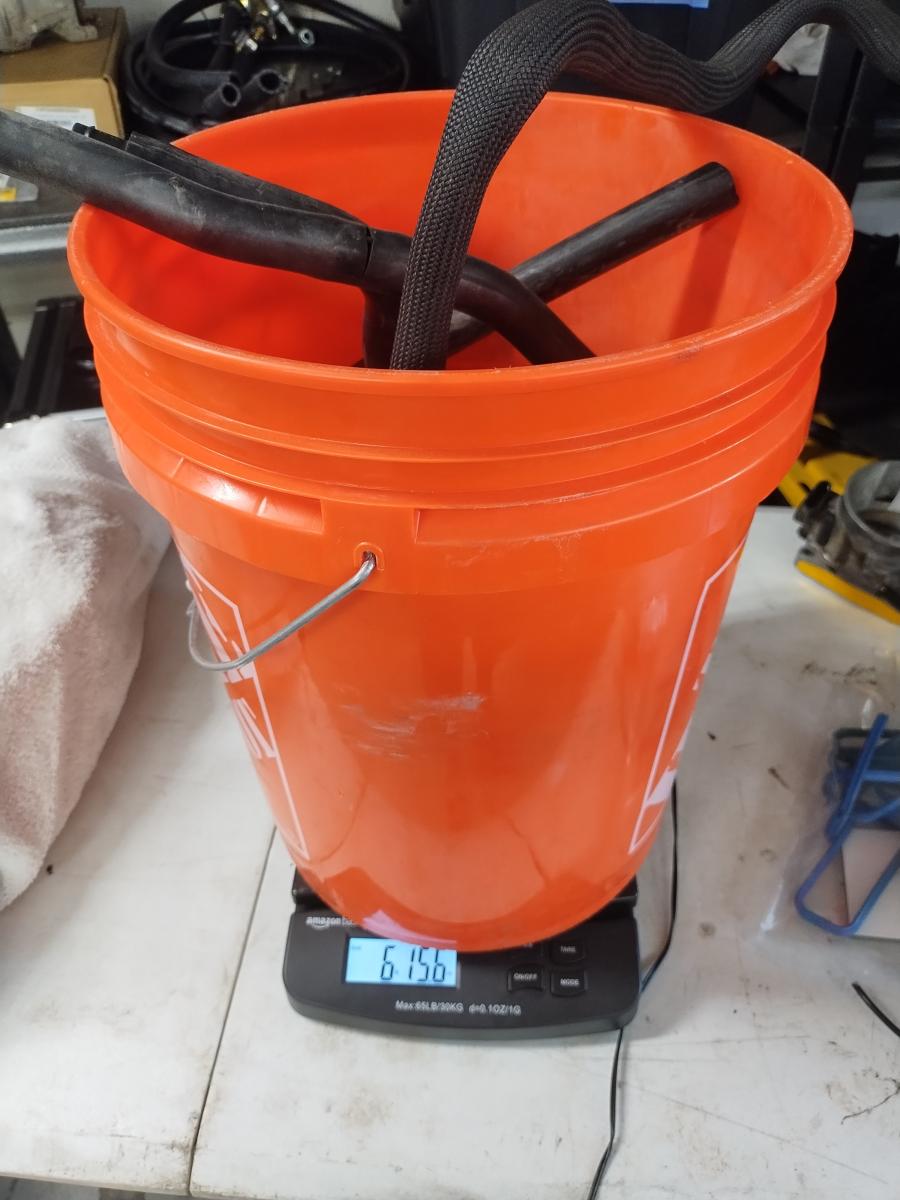
Weight savings wise the AIS came in at 6lbs, 15.6ozs, so pretty much 7lbs even. Since folks are going to wonder, I zero'd the scale with the bucket on it first, then put all the bits of the AIS system in the bucet. That's a rather notable weight savings, and all of it off of the front of the car where it needs weigh savings the most, so extra worth it!
Ditching the AC Compressor For Weight Savings
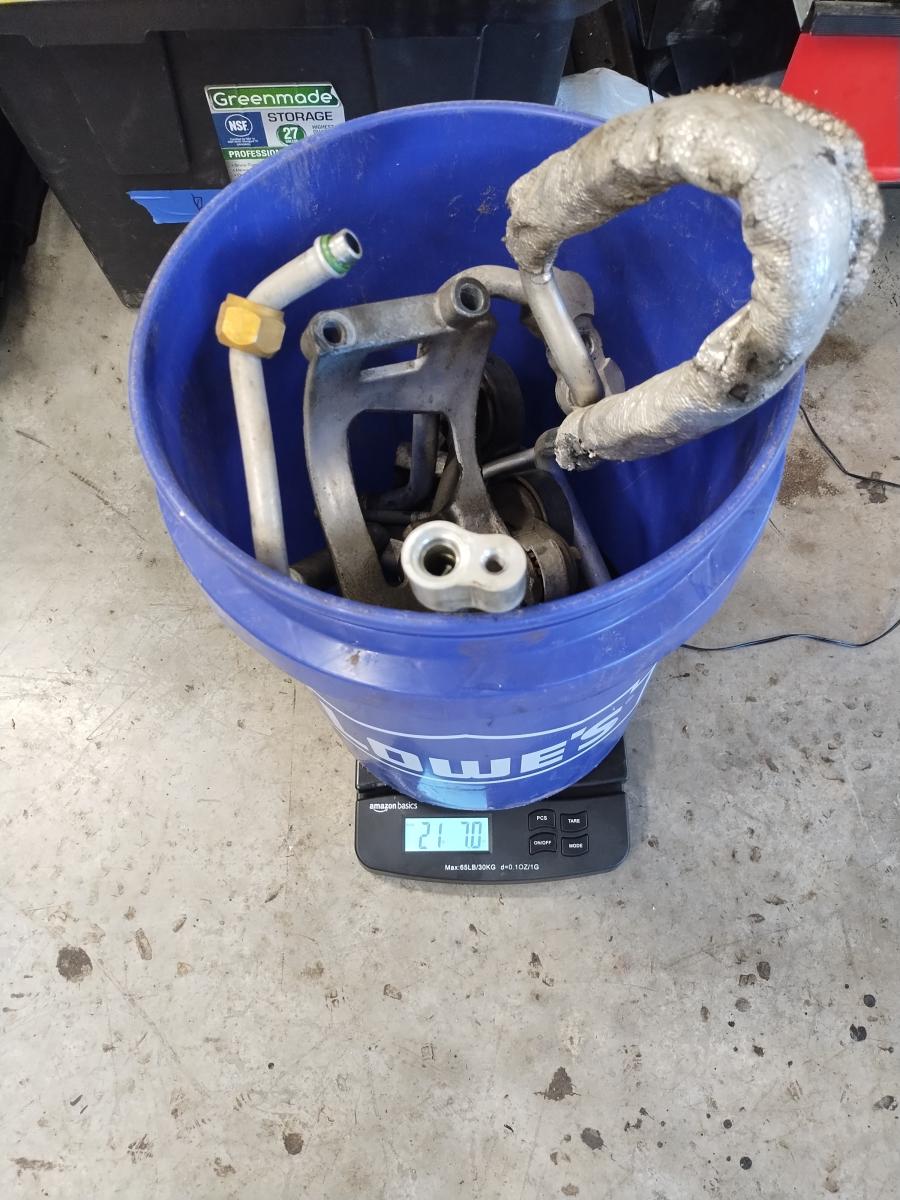
So if you pull the AC compressor, pulleys, and nearby AC lines, you can ditch 21lbs of weight. Be sure when removing the compressor to go the very obvious small amount further to remove the pulley bracket.

Assuming you have the time and patience to fully complete the job, you can also of course remove the front AC condenser, which will ditch another 6lbs. There's ZERO reason to leave it on and it will infact just impede airflow to the radiator. It's just a slight nuisance to get to and involves draining the radiator and pulling a bunch of lines and wires and what not for access. In my case I just left it in the car until I next found myself draining the car and access the immediate area, at which time I drained the condenser.
This brings the total net weight savings of the AC system to 27lbs, a pretty big savings for little cost (assuming you get AC system evacuated).
Do Long Tube Headers Save Weight?
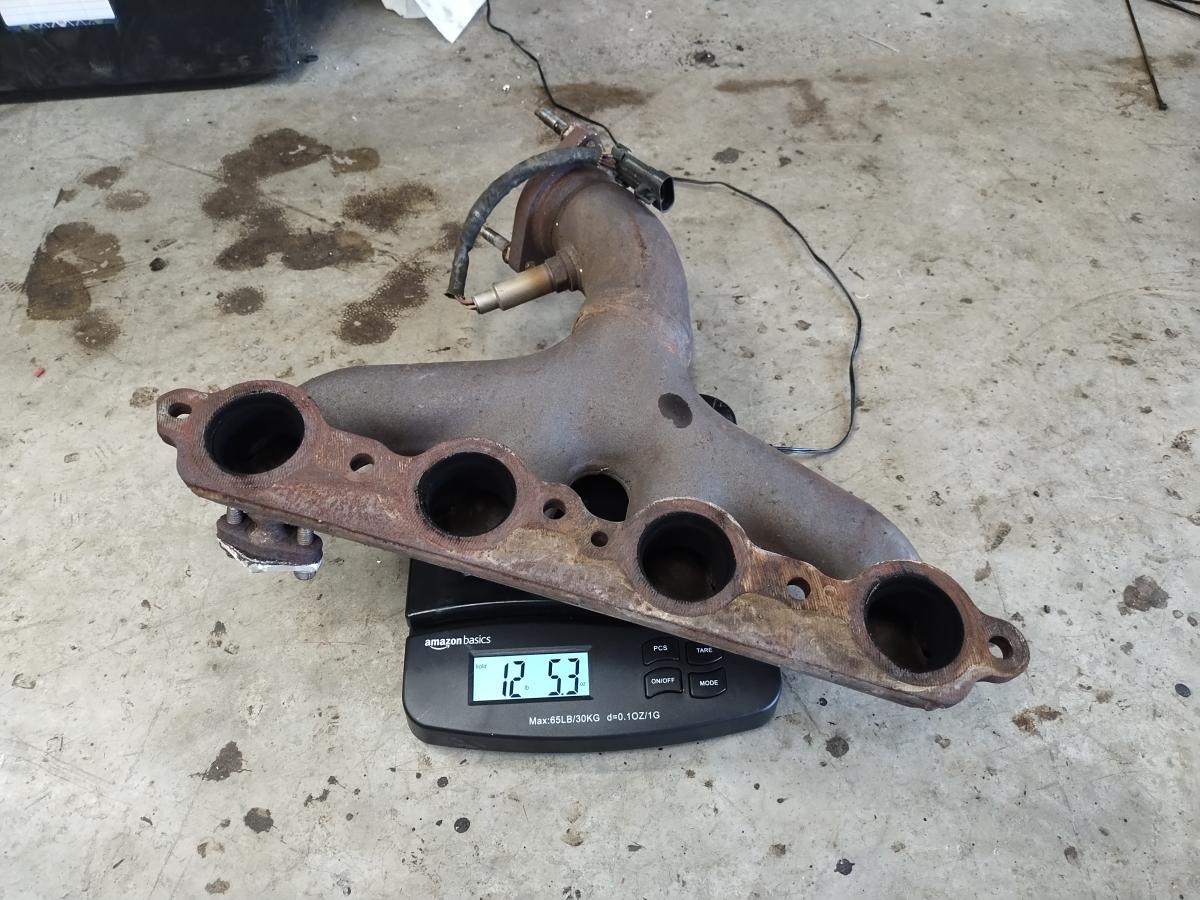
The OEM cast iron header on the drivers side weighs 12lbs. Heavy for sure.

Kooks 1-7/8" stainless headers with ceramic coating weighs 13lbs, 13ozs, so pretty much 14 lbs. That's a weight GAIN. However, the long tube headers are longer than the oem cast iron and will replace that material, so it's probably a wash weight savings wise.
It's worth noting that apparently the early C5 Corvette's (pre 01) had steel headers. The later years base model corvettes apparently switched to a cast iron manifold which in turn weighs 10lbs more. I can't confirm this, but that's how the story goes, and thus you may see improved weight savings by doing this.
LS3 Water Pump Weight Reduction
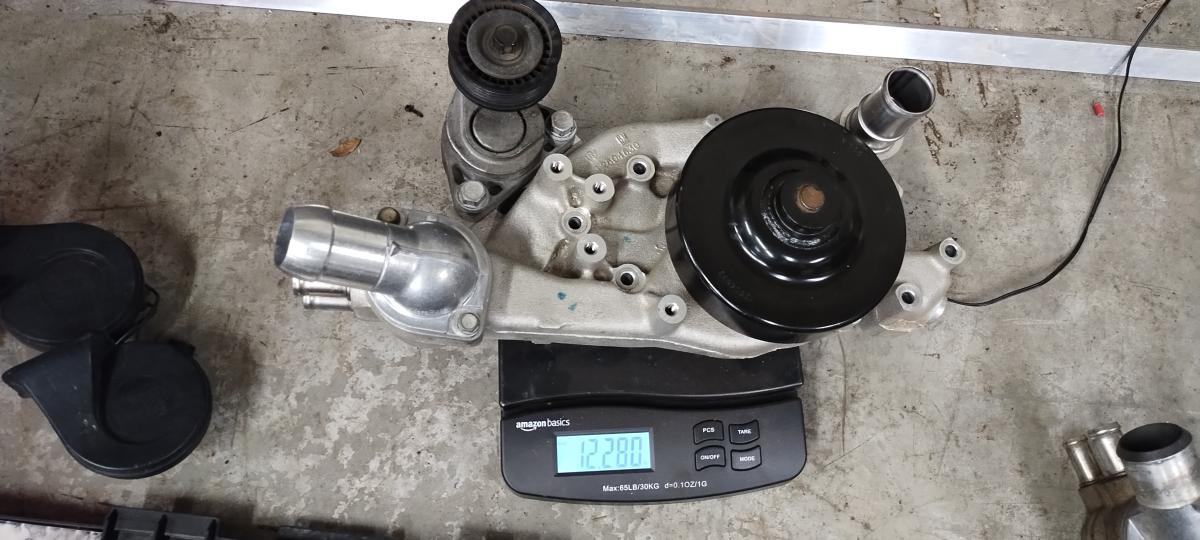
As part of upgrading my C5 Corvette's power, I did heads and cams and all that fun stuff. While in there doing all of that work, I decided to swap out the OEM water pump in favor of the lighter weight LS3 water pump. The LS3 water pump with everything on it weighs 12.28lbs.
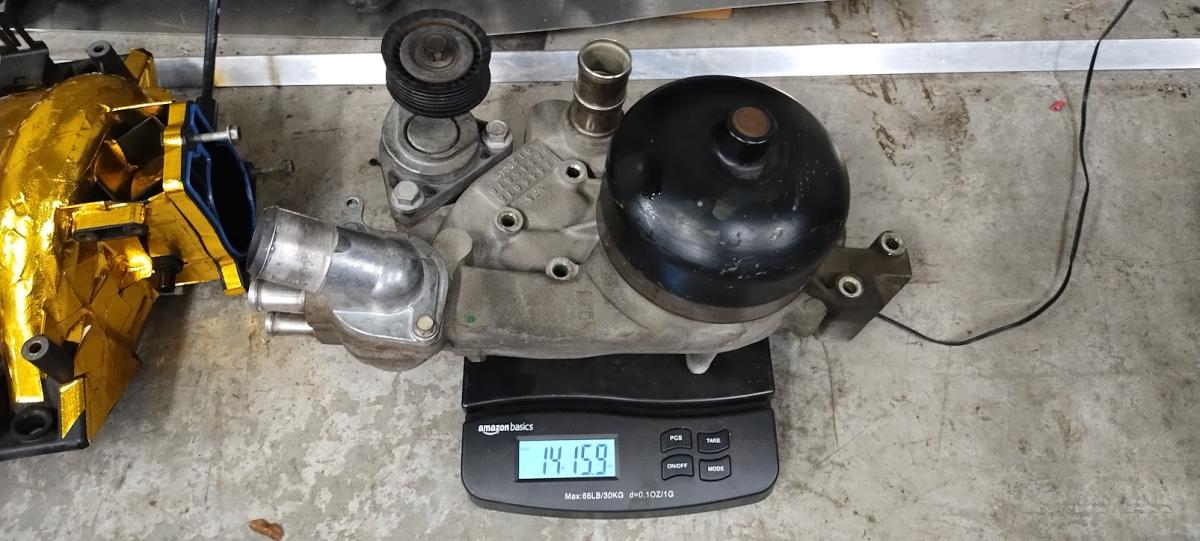
The original LS1 waterpump with everything on it weighs pretty much 15lbs right on the nose. So, you can save 2.75lbs off the nose of the car by converting to the LS3 water pump. Also, while not tested, visually the pulley on the LS1 pump is substantially larger than that of the LS3, so I would wager this is also a reduction in rotational mass making it more effective at weight reduction than meets the eye.
C5 Corvette Horn Weight
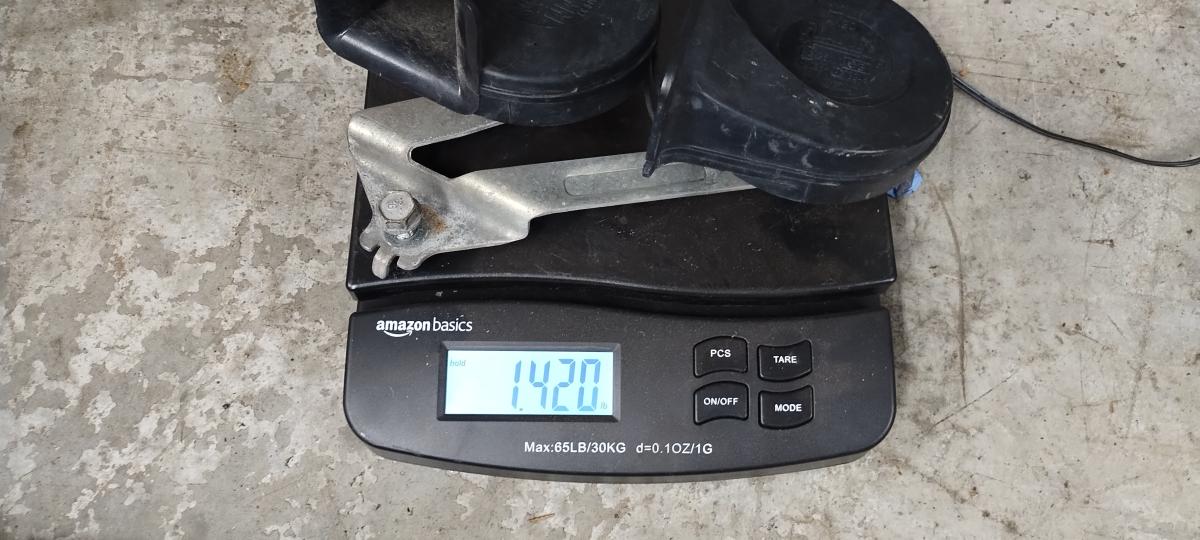
I'm pretty sure nobody has ever asked how much the horns on their C5 Corvette weigh... but since my horn setup doesn't work and I've made it this far without a horn... I might as well pull mine and save a small bit of weight! Coming in at 1.42lbs of weight, ditching the C5 Corvette hornsi s hardly worth it... but there is indeed some savings to be had there!
Additional Removed Items As Part of Roll Cage Installation
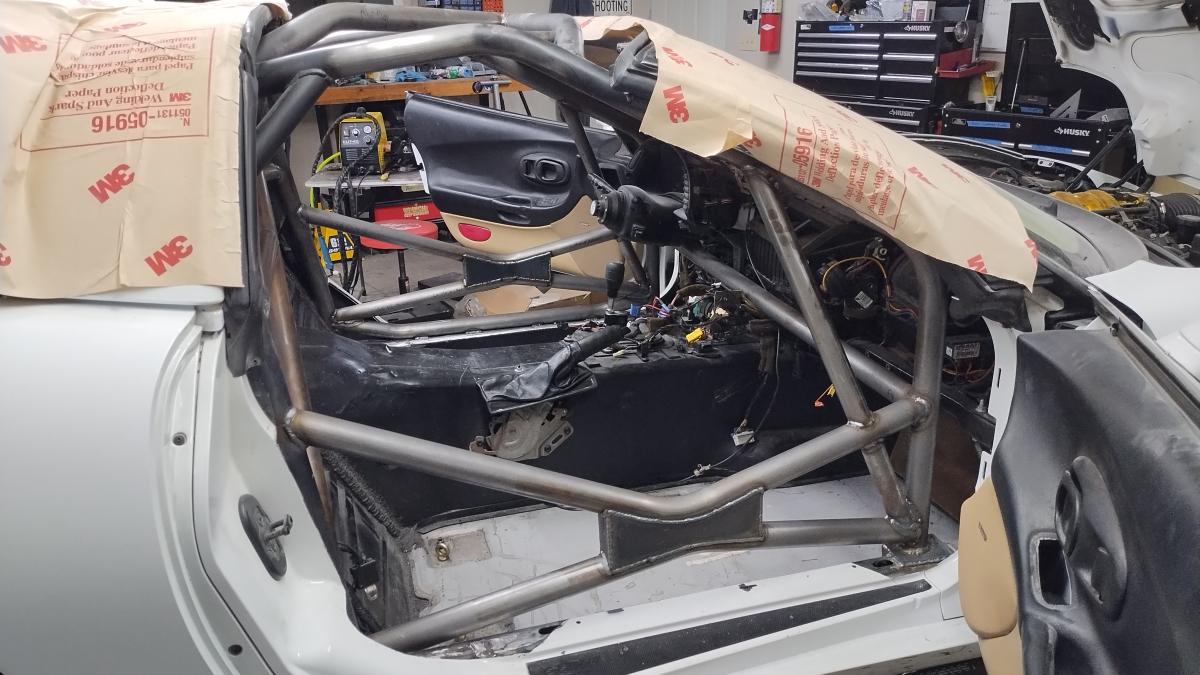
Recently I began the process of installing the Trackspec C5 Corvette Roll Cage, and as part of that process... a bunch just didn't make sense to keep in the car anymore... so I removed it and weighed it for you all to know just what some stuff weighs.
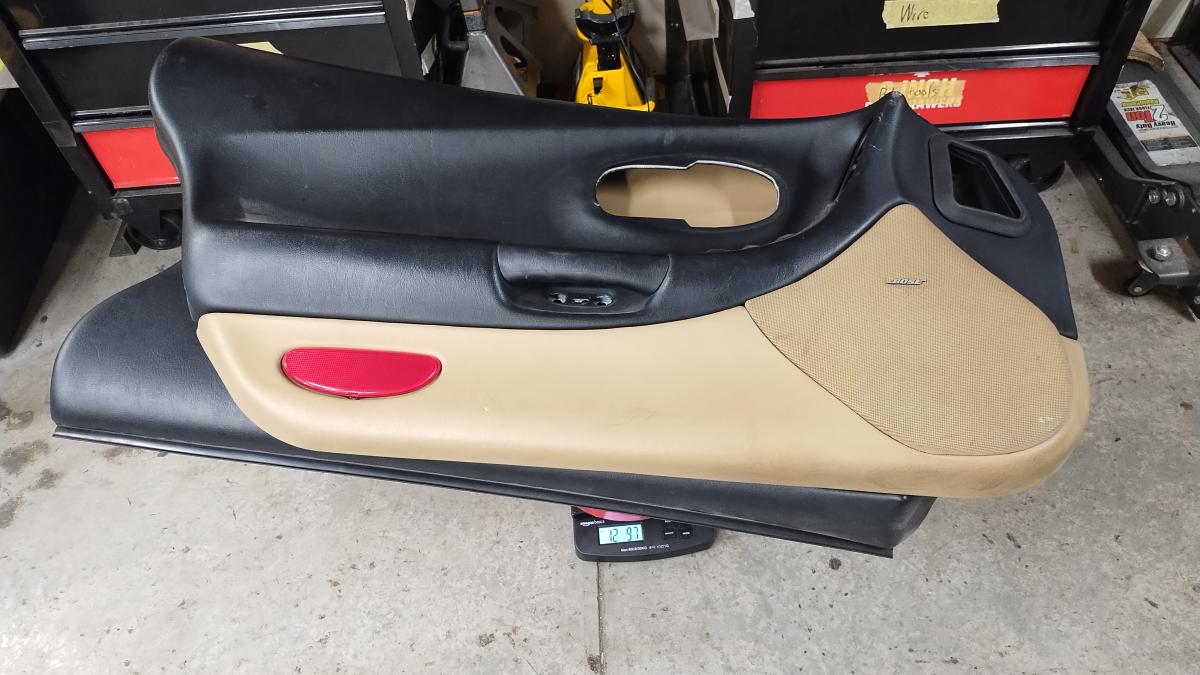
Right off the bat... I couldn't keep the door cards on the Corvette. They contacted my door bars and the amount of modificaitons they would require would be too significant. Thus, they had to go! The weight savings was there though at 12lbs 9oz!
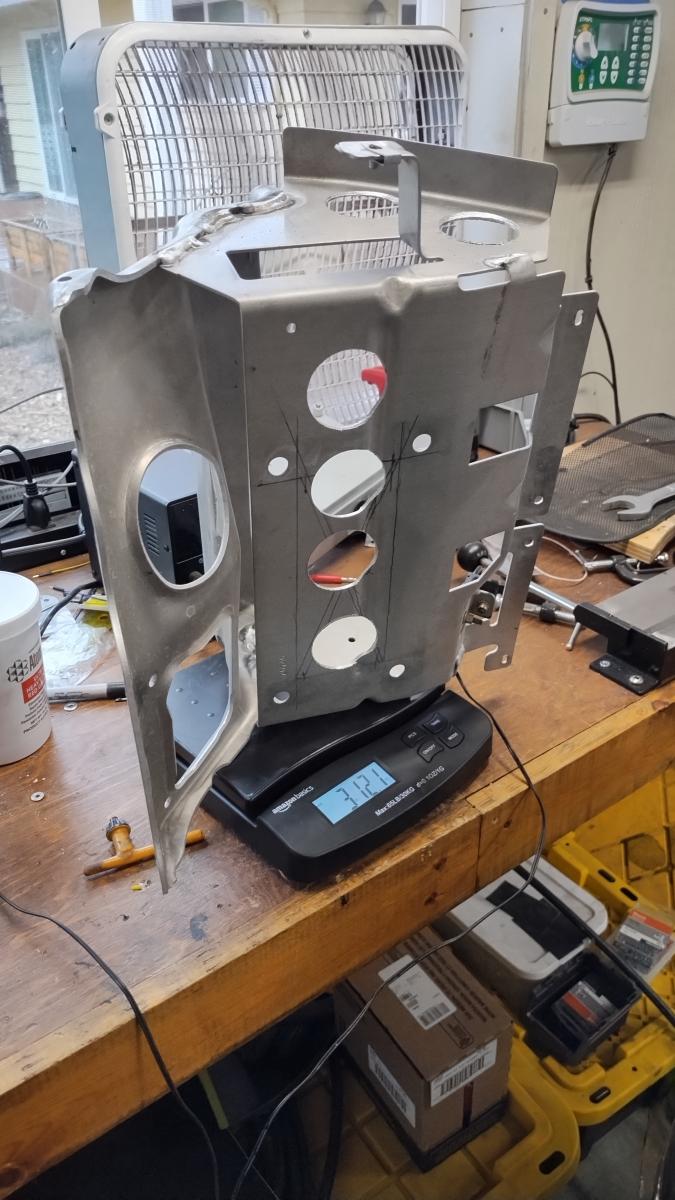
Here's a bit of weight savings I didn't expect... but removing the passenger airbag and dashpad frame structure removed 3lbs 12ozs, aka 3.75lbs. Considering I already cut a few holes in it to ditch weight I'm confident most folks will find 4lbs of savings here.
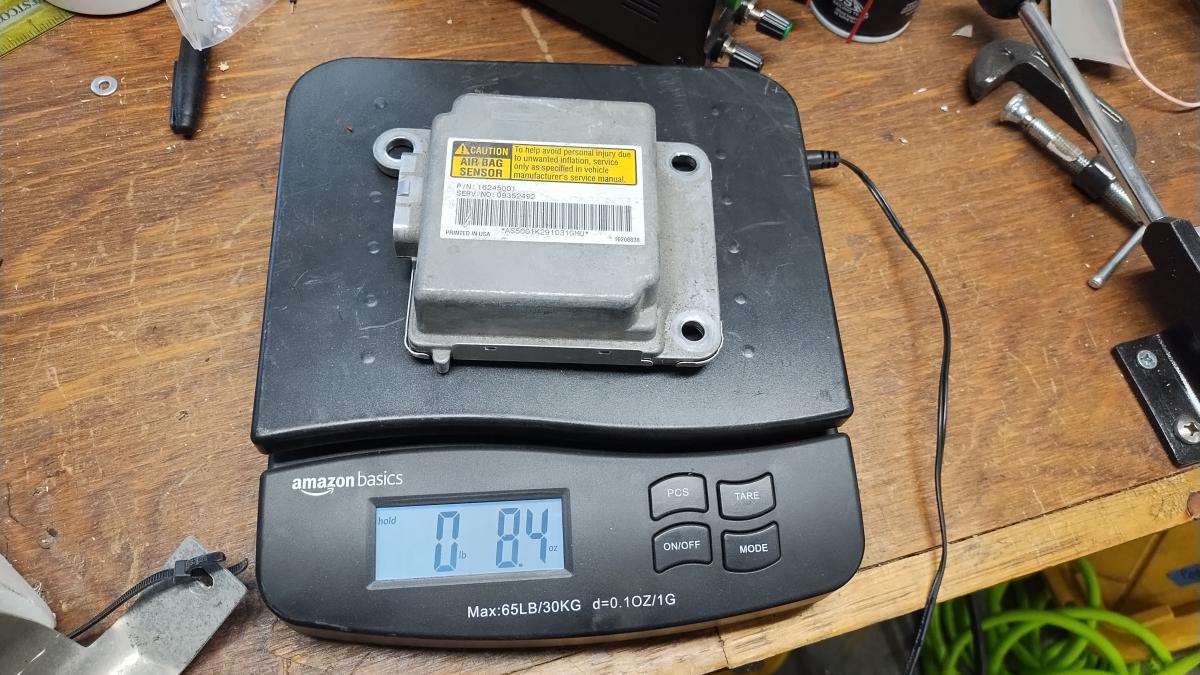
Since the airbags are out of the car... no sense keeping the airbag module! It weighs a half pound, so nothing all that significant, though with the airbags themselves removed it's just that bit extra weight.
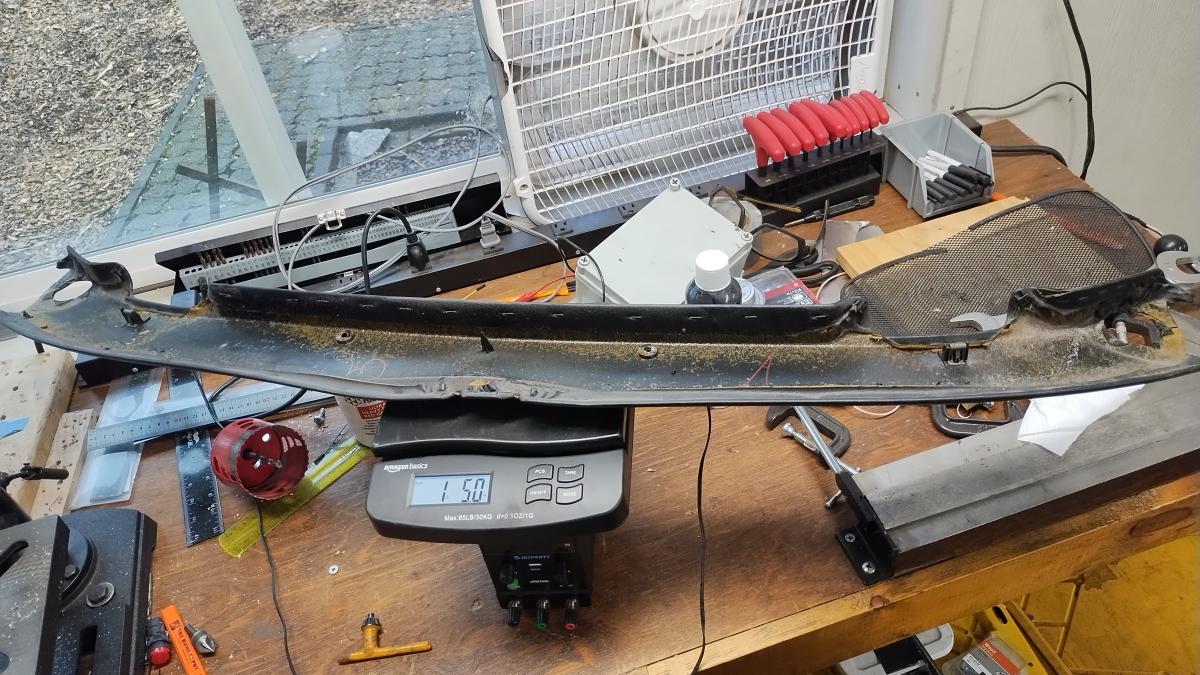
Here's another moderate bit of weight savings... the daspad backing piece weighs in at 1.25lbs. Nothing major in itslef but it adds up!
Current Cage Install interior weigh savings: 18lbs
(NOTE: Yes the cage will add more weight than this, though this does help offset the cage's weight somewhat)
More info to come! I need to weight the dash itself, and then there's a bunch of small plastic interior trim pieces I need to weigh as well. Hoping this adds up to 25-30 or so lbs of weight savings. We added a notable amount of steel on the car that wasn't there before, and even the rear of the cage is beefier than the rollbar it replaced... so I'm expecting the final weight of the car to be up, but the damage will hopefully be mitigated a bit!
Other C5 Corvette Weight Reduction Topics are Coming soon!
Look forward to more posts on weight savings, though i am rapidly approach the end of the process. Some weight savings will be acheived through conerting the rear glass to Lexan... and after that I'm pretty much done. Then I'll be installing a Trackspec rolle cage, which weighs a notable amount more than the rollbar that was in the car... so it's entirely plausible I negate all of the weight savings.